 I have interviewed Ignacio Meneu creator of Pau´s World, an animation series in the making, and he is going to take us trough the process of developing such a project. For more information go to: http://pau-world.over-blog.com/
I have interviewed Ignacio Meneu creator of Pau´s World, an animation series in the making, and he is going to take us trough the process of developing such a project. For more information go to: http://pau-world.over-blog.com/- What is Pau's World?
Pau's world is a series of children's entertainment, full of humour, entertainment that tries to show everyday things that children learn, know and discover with amazement and with great enthusiasm.
Pau´s World is located in an imaginary space. Full of clean and relaxing colours. Pau´s World floor is fully covered by an immense carpet, soft, smooth and decorated with lots of pictures and objects that may have all kinds of functions.
The carpet forms rolling hills that give the impression of a landscape covered by colours and patterns.
On the carpet there are objects of all kinds; animals, foods, vehicles, musical instruments, etc.. All are stuffed with soft-touch appearance of different types of fabrics, with rounded and cuddly forms. Everything is very pleasing to the eye of a child. We avoid loud colours and aggressive forms.
In some parts there are different layers of quilted fabrics piled on one another, with flower shapes that can be deployed. These fabrics are sewn by one of its parts so that when they are lifted and put into vertical elements can be formed to help develop certain stories.
For example: when one of these quilted fabrics it’s lifted you can see a big letter: the "A". This can help to develop a series of gags and stories to help understand the “sign”, in this case, the letter.
Another example: on the carpet you can see a road that it is lost in infinity. Suddenly he hears a siren, is stuffed fire engine that stands in front of our protagonists, they rise and go with it. They go to rescue a kitten from a tree.
- What are the main characters?
Our main characters (Pau, Mister Bear, Alí and Voice) are very different in their outward appearance, but the way they act and behave is that of any three or four year-old child.
It all forms part of the unique dream world of Pau, the main character of the series.
The other most important character is the narrator’s voice which shall be known as “Voice”.
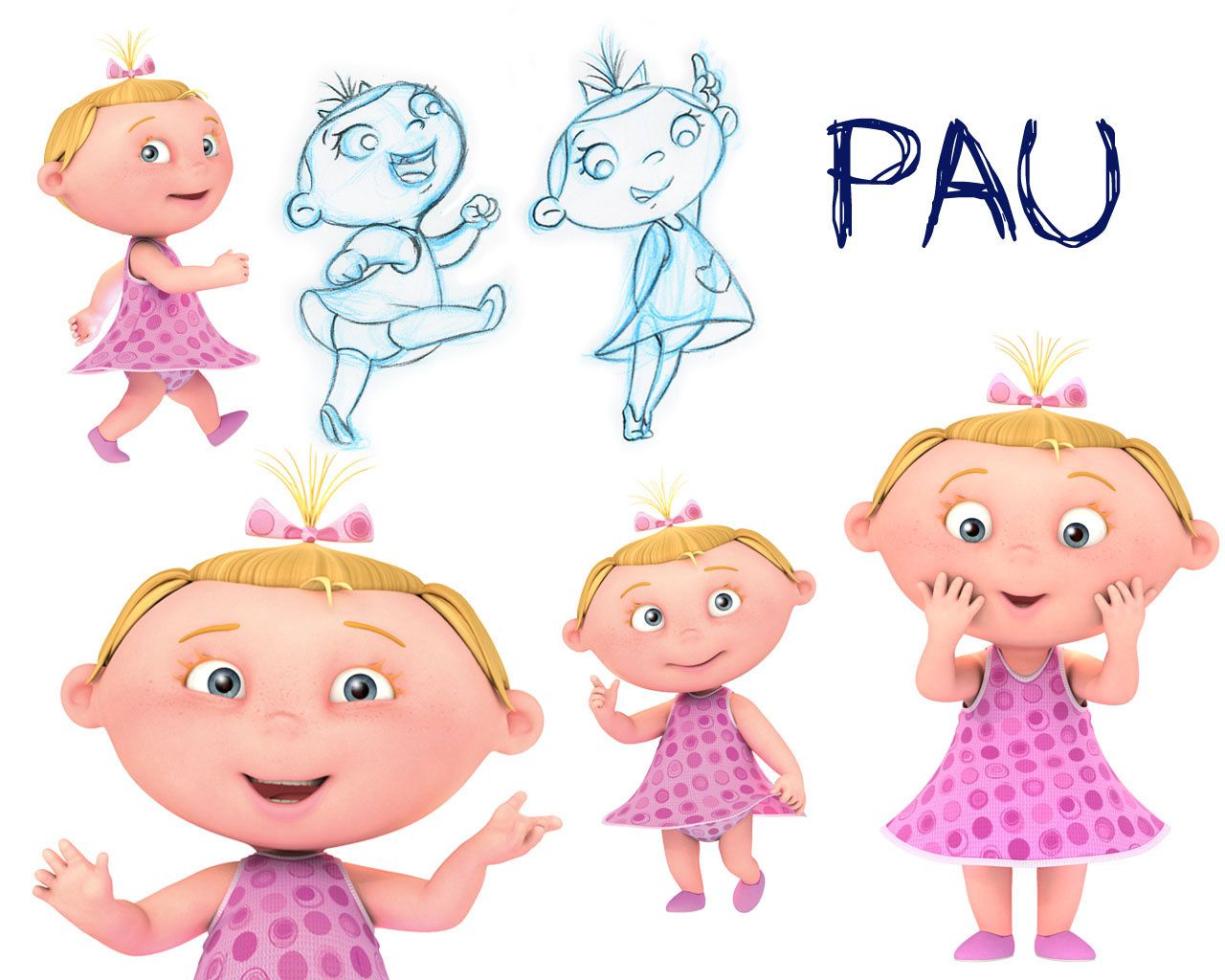 Pau is a 3 year-old girl. She has a happy countenance, big blue eyes, fair hair drawn backwards in a ponytail and a short, spotted pink dress.
Pau is a 3 year-old girl. She has a happy countenance, big blue eyes, fair hair drawn backwards in a ponytail and a short, spotted pink dress.It is the human character of the series and her imagination has created the world of fantasy where the series takes place.
Her dream world is mainly linked to her playing area, which is the reason why this world is based on her playing carpet, padded, soft and full of multicoloured images. When she plays, her world has no limits and her imagination can create all the fantasy displayed in each of the chapters.
Pau is accompanied by two inseparable friends: Mister Bear, a great teddy-bear, which is taller than Pau and also Alí, an incredible robot, much shorter than she is.
The narrator can be considered as another character and is known as “Voice”. Pau has a great respect for “Voice” and feels she is someone very wise and always knows all the answers.
Hand in hand with Mister Bear, Pau learns different concepts related with nature and our environment. This huge teddy-bear will teach her, for example, how to take care of plants or how to feed and take care of various animals. The robot Alí gives Pau the opportunity of learning about other cultures and societies. In its huge memory, Alí keeps a large quantity of knowledge. The robot increases the amount of fantasy in the series, helping to develop the imagination of Pau and, with her, that of all the children who will surely identify themselves soon with our characters. Alí’s ability to fly or show her new things are some of the features of this character which fascinate Pau.
Pau is a very restless and active girl, who loves to learn new things. She loves to laugh and have a good time. One of her main features is her infectious laughter. Both Alí and Mr. Bear can’t help themselves when their friend breaks out laughing.
 Mr. Bear is very big and strong, with a quiet and simple air around him. He wears a checked tie that gives him a grown-up look. He also has a self-sealing tape on its back. He is the least smart of the three characters, but very crafty and helpful during the various adventures that take place. He is usually wrong, but he manages to learn, bit by bit, despite his mistakes.
Mr. Bear is very big and strong, with a quiet and simple air around him. He wears a checked tie that gives him a grown-up look. He also has a self-sealing tape on its back. He is the least smart of the three characters, but very crafty and helpful during the various adventures that take place. He is usually wrong, but he manages to learn, bit by bit, despite his mistakes.Mr. Bear is very happy with everything he learns and is the first to try out any novelty that comes about. He is very impulsive and emotional.
He has a special relation with Pau, whom he considers his best friend and the cleverest person in the world.
With regards to Alí, they are two best friends who are constantly playing jokes on each other and are very aware of what the other is doing. Mr. Bear is constantly awed by the various props which Alí can display, but what he really admires is Alí’s ability to fly. Mr. Bear wishes he could do that himself.
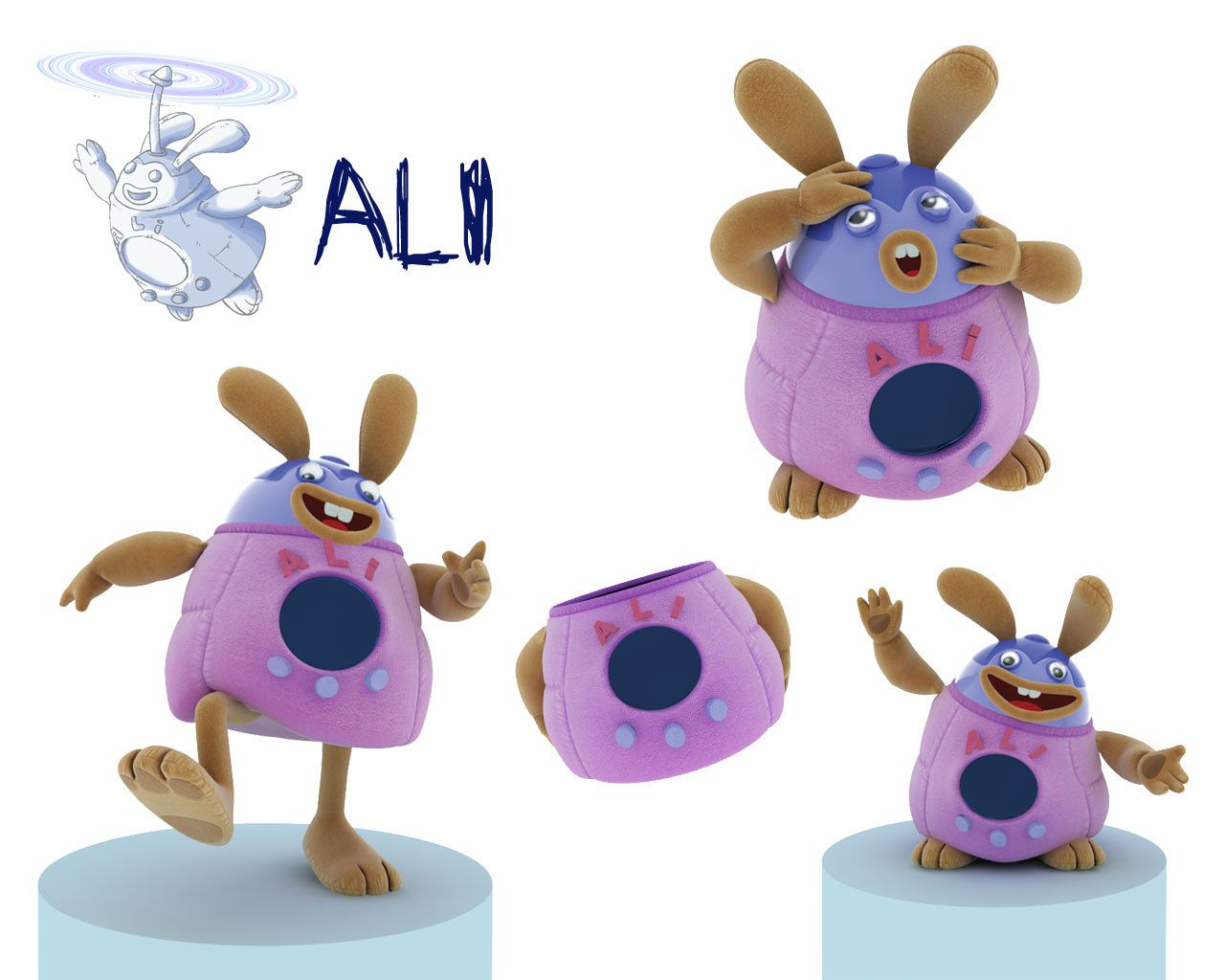 Alí is the youngest of the three. It has just turned three years-old, it’s very playful and a bit mischievous. Its looks are strange because it is made of recycled pieces from other toys, but assembled with such love and care that it has unique qualities.
Alí is the youngest of the three. It has just turned three years-old, it’s very playful and a bit mischievous. Its looks are strange because it is made of recycled pieces from other toys, but assembled with such love and care that it has unique qualities.Alí is the smartest of the three characters. It knows most of the objects and can face any new situation. Its electric connections are a constant surprise, since they can produce almost anything, so that it is of great help to solve those unexpected tasks where a special tool is needed. However, it is the most coward of the three. When it feels scared, its first reaction is to hide its head inside its body, such as turtles do, staying motionless as a simple computer. In its great innocence, it believes that way it shall not be taken notice of. It usually cries for Mr. Bear’s protection.
It is a very magical robot and can do incredible things. It can even fly when it opens its propellers above its head in the same way as a helicopter.
Its legs are extra-elastic. In its normal position it keeps its legs folded, so that only the toes can be seen, but sometimes it stretches its legs to walk, run or reach out to grab things.
Alí is very proud of the plasma screen on its tummy, which has a double use. On it, Alí displays images to illustrate interesting issues but when the screen is open, there is a magical pocket which provides Alí with all the tools and objects needed by our friends to complete the tasks on which they are working.
- How did the idea of Pau's World come out?
The idea of the series began with the invention of the main character: a girl who finally was called Pau. It's a female character and the major influence in creating this character comes from the observation of my daughter, who in those days was about 4 years.
Seeing the way she played I realised that children, but even more girls, tend to play in an imaginary space that limit without realising it and where they develop all their imagination, so that wherever they have their play space they create their fantasy world, where they play and where they develop their personality.
In the case of my daughter, her play area was surrounded by a carpet, fluffy, full of colours and gadgets with which to create her games. She also had a pile of stuffed animals, dolls and all kinds of toys, books, etc.. Despite the array of toys at her disposal, I noticed that she was particularly fond for two of them; with which virtually always played and made part of the stories she invented. These toys were a rather large teddy bear and a stuffed cat which he called "Michuco”. Michuco and the bear are still her friends now that she is eight years old and keep on treating them in a special way.
These elements began to take shape in drawings and gradually I added descriptions for the characters that I drew, adding possible personalities, attitudes, situations and so on.
When I noticed that I was accumulating enough material for an animation series, was when I began to develop individual ideas.
I kept the characters of the girl and the bear, but dismissed the cat, as I needed a character that was very versatile, fantastic and a bit unreal for the imagination to flow visually.
I decided to create a robot, but it should not be a cold or static character. On the contrary, Ali should be outgoing, talkative, playful, friendly, and almost perfect.For children to be able to relate to him I made him a little scared.
This is how the adventure of Pau´s World series started.
-Tell me a little about you background so we can understand how you could put together a project of this kind, please.
Let’s see where I start ... I will start from the beginning, although it is so many years ago that I do not know if I will remember.
My hobby, skill, gift, I don’t know how to call it, has always been drawing. Since I can remember I have always tried to capture on paper forms, lines and colours. Luckily, my parents always supported my interest and even though at that time in Spain was very difficult to obtain a profession such as animator, my parents help me all they could so I could go to train in Madrid studies Filman animation. These studies were working at the time for Americans and more specifically to the American studio Hanna-Barbera, making animated series as The Flintstones, The Smurfs or Lucky Luke. Thanks to the Filman studios and the professionals that were working there I could start my career as an animator.
I worked for several years as an animator in series and American and English films, Count Duckula, and Vicor and Hugo, Avenger Penguins, Benjamin Blúmchen, Once Upon a Forest, etc…
After the experience in Madrid, I decided to start the animation studio Camelot with a friend. Our big dream was to produce series and movies. We provided services for other producers, but we made some interesting things like a music video for a famous Spanish group called Radio Futura and their song "Tierra". We were also able to produce a short film of 15 minutes called Domestic Tales, which can now be seen on youtube.
This adventure ended when the financial problems came in and we wanted to grow in the profession.
In 1991 I worked in London for Steven Spielberg in Amblimation for the animated films: An American Tail II, Fivel goes west and We're back.
Back in Spain I was hired as Animation Director at Cartoon P in Valencia. This company gave animation services to producers from around the world; while producing their own television series.
The series produced and directed by me were Cutler Microfilms, Babala or Pumby.
Providing services for other companies I participated as Director of the Department of animation series such as: Captain Pugwash, Little Gray Rabbit, Terry Pratchett Discworld and others.
After seven years, I decided I needed a change of scenario and moved to work to Madrid. I worked on MSL Audiovisual and Media developing several animation projects, such as TV series like The Adventures of Marco Antonio or Bunnibal. We also did advertising or headers for various entertainment programs, Memoria de elefante o Un dos tres, a leer esta vez.
After my stay in Madrid, my career began to change with the new technologies and my work as traditional animator began to migrate to computer-generated animation, also known as 3D.
This new tool opened new horizons and endless possibilities.
I worked as an animator in 3 seasons of a children's series for Disney Channel called Alfred the postman. I also did some commercials for Danone's Actimel.
I went to work on two feature films produced by Dygra Films: El sueño de una noche de San Juan y Espíritu del bosque.
In the last three or four years I worked in my own company called: Pigmeos with Ecosystem Diversity producer from Madrid, where I was able to develop a children's game for PC, developed in mixed media, where we have used Flash, 3D and traditional drawing.
Currently, the project that occupies all my time is Pau´s World, which is in the process of production and development.
- What were the first steps you took to start this process?
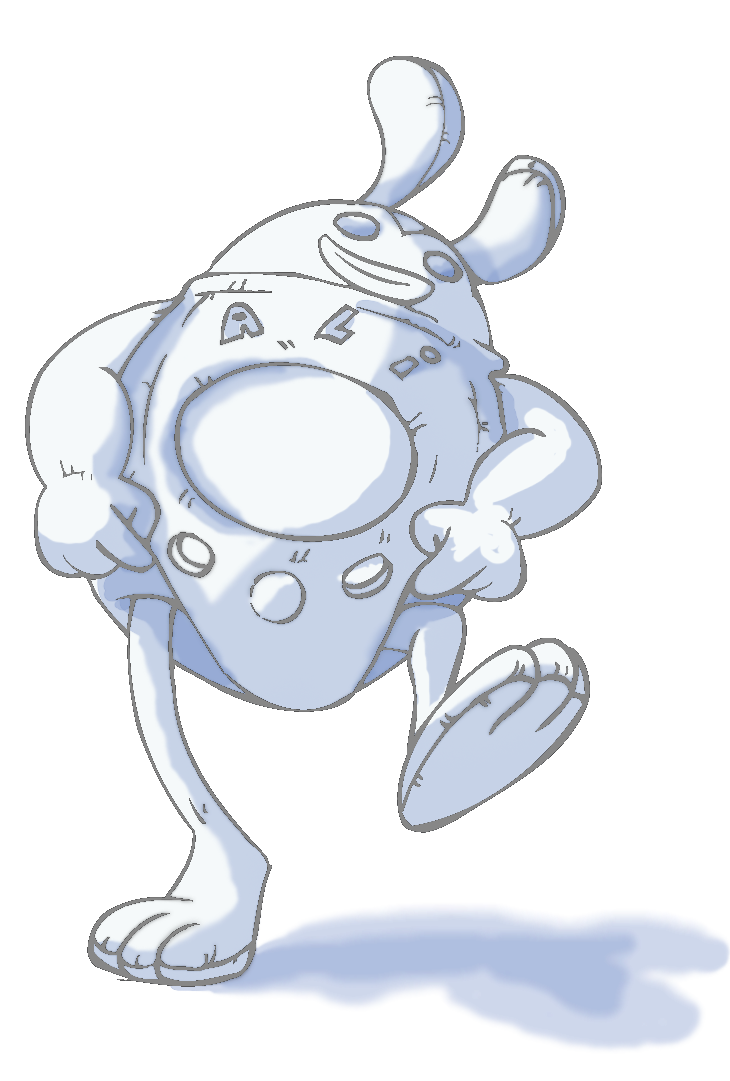 Well, it is a slow and tedious process. I will start from the moment in which I have an idea of what I want to do and I have clear idea of the characters and main concepts of what will be the world where the stories are developed.
Well, it is a slow and tedious process. I will start from the moment in which I have an idea of what I want to do and I have clear idea of the characters and main concepts of what will be the world where the stories are developed.With this little information it is necessary to convince the partner to contribute with a minimum of funding to begin in order to start to give visual form to all the concepts that so far are sketches, lots of text and are all in my head. It's time to get to design and add new ideas and concepts to enrich our project.
The Bible, is what we call the book which contains all the information necessary to know what kind of project is that we face in animation. The Bible must detail each of the aspects and phases of the project. Usually we make the following points:
• Concept
• Target
• Style
• Main Characters
• Secondary characters
• Props
• Backgrounds
• Argument, of at least 13 episodes.
• Overview of 13 or more episodes.
• If possible it is advisable to include scripts or at least a finished first draft.
• Artistic, management and technical staff.
• Financial Plan
• Production plan.
• Budget
-You are in the process of seeking investors for the launch of the series, what are you doing to achieve this?
It is the process that I dislike the most, so I try to delegate this task to people who are more skilled, but still always have to take steps that you can not avoid, such as finantial or commercial meetings, filling endless forms for grants and so on.
There are many ways to get funding; almost all are initially in the form of government assistance, either at regional, national or European level.
Regional: In Valencia, instituto Valenciano de la Cinematografía (IVAC).
National: In Spain, Ministerio de Cultura and ICO.
European: MEDIA
All these subventions require a great effort to apply to, as it is necessary to prepare a large number of both administrative and artistic materials, so it is necessary to have a small team of dedicated people for some time to work on these tasks.
Currently we have only applied for aid for the creation of the pilot to IVAC, we await the resolution and hope that is favourable.
Other means of funding are co-productions, is the key to carry out projects with such high costs. We can also distinguish various forms of co-production:
-The co-production in which a TV station provides an amount of money in exchange for a percentage of profits or in exchange for emission quotas.
-The co-production for services, where businesses provide parts of the production of the series in exchange of a percentage of the profits.
-Financing through presales, is usually generated when you already have advanced the production and can provide with the availability date of the series.
-How have you managed to get to this point, ie the development of the script for the 52 chapters, the modelling, texturing and rigging of the three main characters and the development of several sets in 3D?
Well, as I said before, the initial development funding has been provided by the two producers involved so far in Pau's world project, Ecosystem in the financial side and Pigmeos in the artistic area.
We wanted a commitment to quality and for that we have not skimped on taking care of things in the main character design, environments, and above all we have tried to create scripts entertaining, fun and suitable for the age group of audience to whom it is targeted.
It has taken us a long time since we had to combine this development with different jobs. Most of all I have to highlight and thank the wonderful professionals who have worked creating these characters. First Abraham Meneu, my brother and a genius in modeling and animating in 3D, which gave three-dimensional shape of my doodles and got a particular style, great for the characters. Patricia Rivera, which has given its sensitivity to the cool surface textures of polygons which make up the characters. Luis San Juan, the creator of the rig with which we handle our characters, the rigger without which our characters would be inanimate statues. The script writer Ramón Agullé who, with his stories, made believable characters that speak in a language that we all understand.
I also want to thank the effort made by people who unselfishly have encouraged me to continue and not lose heart with each problem, please continue to support me.
-The production base is Valencia, where you reside. "All the production has been developed there or have you made use of the new technologies such as professional or ftp sites?
The core of the production is at Valencia; this means that it is where ideas are shaped, develop, directed and given form, but much of the production is done through the Internet, using all means at our disposal that help us to communicate and to have continuous access with the artists.
We use ftp to share files and upload and unload files on a daily basis.
Messenger, skype and any format in real-time communication helps us stay in touch at any time with each of the professionals. This provides a wide variety of people that you can count on everywhere and allows us to choose the best profile for the job.
-The target audience is children from 0 to 6 years old. Why have you chosen this audience?
I think it would be more correct to say that the series have “chosen me” and then I had to assess what age group was more appropriate.
Actually when you create a series, you cannot start thinking about the age at which must be addressed, you have to do this at a later stage because the ideas are emerging and piling up, little by little are taking a natural way and I think these ideas are the ones that help you to focus to a specific target audience.
- Have you already sold the series? What are the steps that you are taking or have taken?
Well, the series are in the early stages and it is too soon to start selling it, although it is a good time to seek new investors and co-producing partners.
We have been lucky enough as the series was selected to be presented at Cartoon Forum Rogaland. The Cartoon Forum is similar to a festival but focuses exclusively on industry professionals. It is organized under the program of the European Union, MEDIA. This year celebrates its 20th anniversary and since the beginning that it was held in Tenerife (Spain), has been taking place in a different European city every year, next year will be celebrated in Sopron (Hungary).
The intention with which this event is organised is to bring all parties involved one way or another in the production of animated television series.
The organization takes care of getting each of the selected projects to all broadcasters and investor partners. These show their interest regarding the projects received, so before the event takes place you have already an idea of who is interested in your project.
The event usually lasts 4 days and is organised in a way that all parts stay in the same emplacement to encourage negotiations.
At breakfast, the trailers of each of the projects are presented. There are three rooms where each producer presents its project and attendees can see and hear everything about the project.
Our project was very well received and we could make some important contacts for a possible sales and perhaps a co-production. We must develop a first chapter and work further in all that relates to visual development and content since we could only complete the trailer for the series to be shown at the presentation.
Investors are becoming more demanding and want to bet on sure things, this is why hey require a minimum of production developed and closed funding to ensure the project is going to be finalised.
- What are the fairs or the ideal places to present this type of project?
It depends, as I said earlier if the project is in its early stages, there is no doubt that the best thing is to be presented at the Cartoon Forum.
If it is an advanced project and already has a season completely finished and ready for sale, there are several exhibitions among which I can mention these:
-Annecy Festival, in France.
-Licensing International Expo and Napte, Las Vegas, New York Mipcom, UUEE.
-CON-CAN Movie Festival Studio Hard Deluxe Inc., Tokyo International Anime Fair Executive Committee, Tokyo.
-Hiroshima International Animation Festival, Hiroshima.
-Have you had access to a grant from Spanish Ministry of Culture?
Although I know they exist and are important, this year we could not apply since the dates were very close and we could not prepare everything necessary on time. There are a lot of forms to fill in and, above all, the whole project should have a very good graphical presentation for not being rejected.
I am sure we will be able to apply next year and have the confidence that it will be granted.
-The budget of the pilot is about 125,000 Euros. Could you explain me in which areas is invested most of this budget?
Luckily I have been able to develop the budget myself and, since I am an animator, I allocated a large part of the budget to the artistic development; that goes from the script, 2D designs, lighting, modelling, shading animation and so on.
For me it is very important final look that is achieved in each chapter and I do not skimp with the typical excuse that some investors are using by saying: "It’s only for children!" underestimating the most loyal and grateful audience and to whom we owe all our respect.
- What are your competitors, have you identified them?
Our competition are the series that are aimed to the same target audience, but I believe this should not be taken as a negative aspect as it should provide a stimulus for improvement so that we strive to achieve a better quality product than the one presented by X producer.



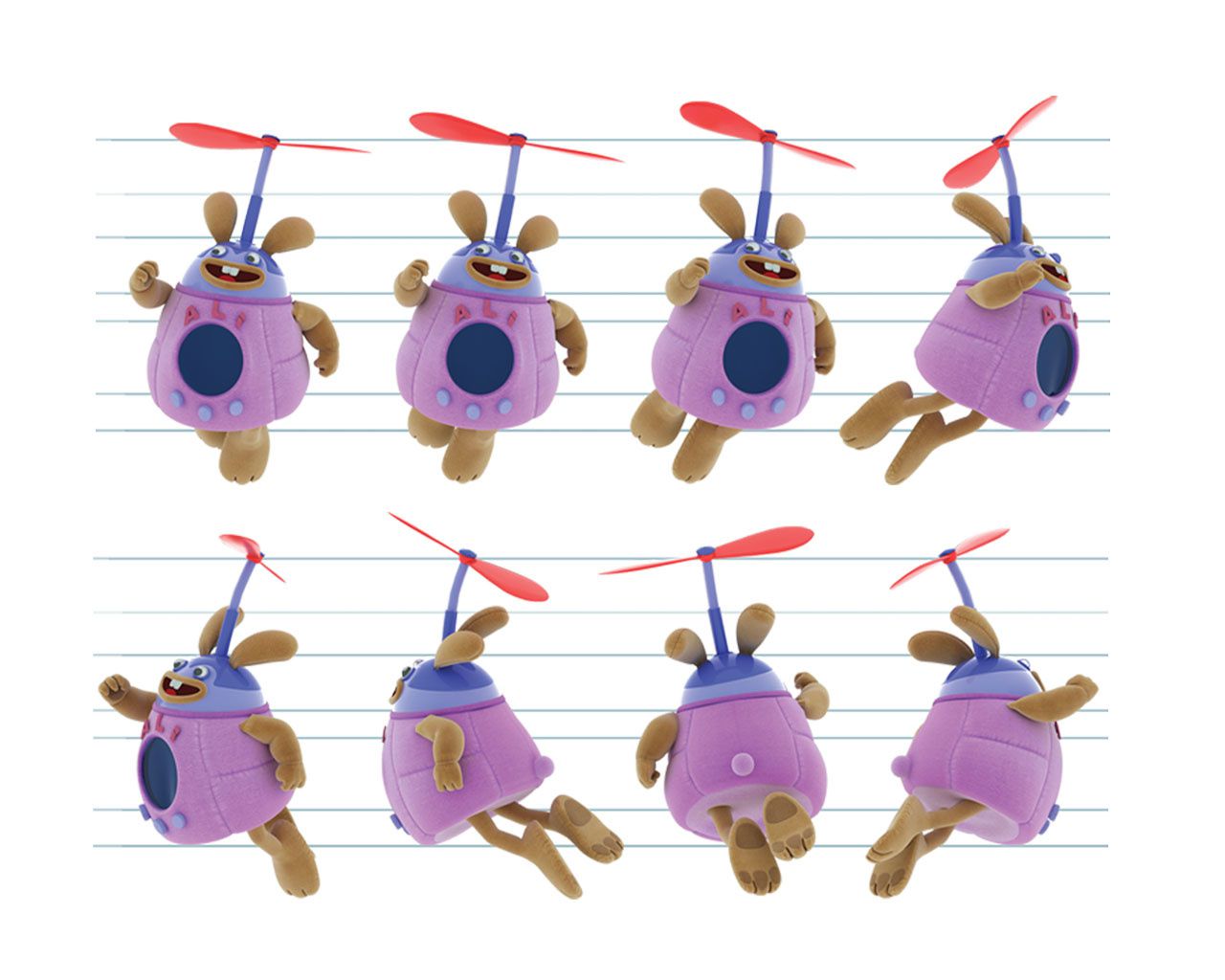
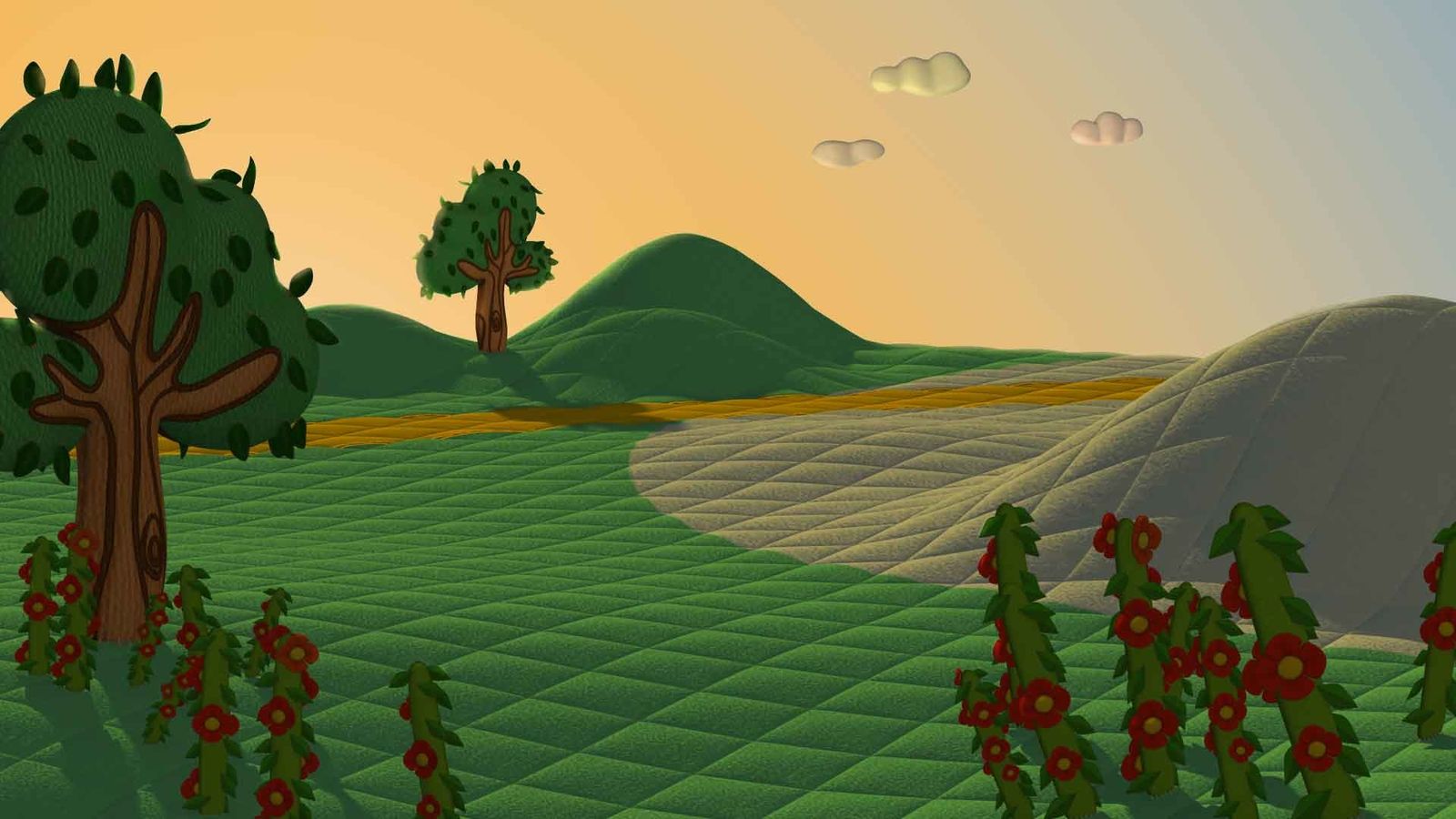


No comments:
Post a Comment